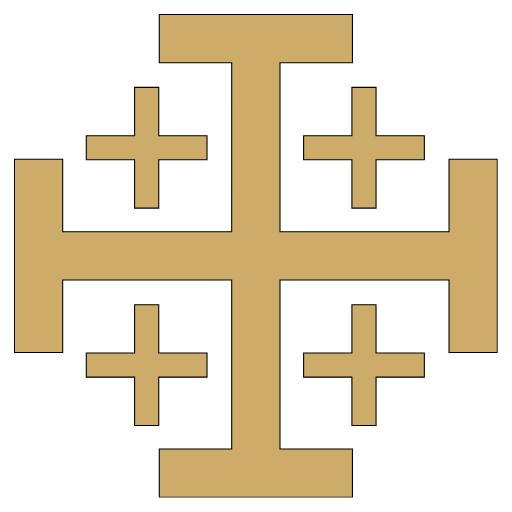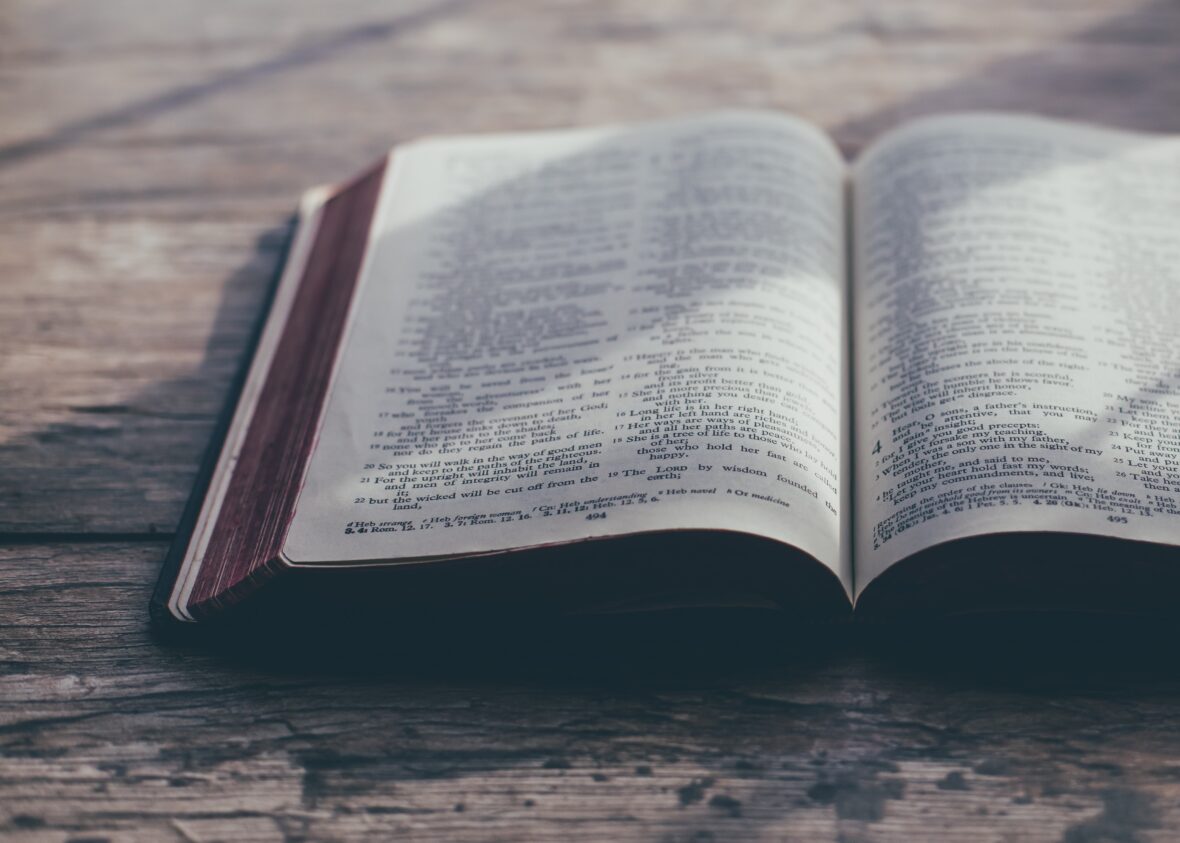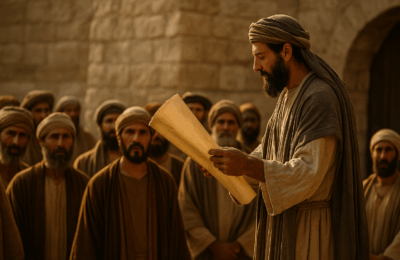Home | Bible Resources | Pentateuch (or the Law)
The Book of Exodus: Redemption and Revelation
Introduction
Exodus is the story of how God redeems His people from bondage and enters into covenant with them. It bridges the promise of Genesis to the formation of Israel as a nation, revealing Yahweh’s holy name, His powerful deliverance, and His intent to dwell among His people. From slavery to Sinai to sanctuary, Exodus reveals the God who saves in order to sanctify.
1. Title, Author, and Date
Title Meaning: “Exodus” comes from the Greek Exodos, meaning “a going out” or “departure,” reflecting Israel’s dramatic deliverance from Egypt. The Hebrew title, Shemot (“Names”), derives from the book’s opening phrase, highlighting its connection to Genesis and the continuity of God’s covenant people.
Authorship and Date: Exodus is traditionally attributed to Moses, affirmed by internal references (Exod 17:14; 24:4) and NT affirmation (Mark 7:10; John 5:46). It was likely composed during Israel’s wilderness period (c. 1446–1406 BC), following the literal, early date of the Exodus during the 15th century BC (1 Kings 6:1).
Historical Setting: The events unfold in Egypt and the wilderness of Sinai. Israel, enslaved for centuries, is redeemed by Yahweh’s mighty hand and brought into covenant at Sinai—marking the birth of the nation and the beginning of God’s dwelling among His people.
Covenantal and Redemptive Role: Exodus is foundational in biblical theology: it reveals God’s covenantal name (YHWH), introduces redemptive typology (Passover, Tabernacle), and begins the mediatorial office of Moses, setting the stage for the coming of Christ.
📊 Book Stats:
- Chapters: 40
- Verses: 1,213
- Approx. Word Count (English): 32,600
2. Purpose and Themes
Purpose: To declare the faithfulness and power of Yahweh in redeeming His covenant people, establishing His law, and dwelling among them.
Major Doctrines:
- Redemption by blood (Exod 12)
- Covenant theology (Exod 19–24)
- The presence of God (Tabernacle)
- Mediatorship of Moses (foreshadowing Christ)
- Sanctification through obedience
Literary Structure:
The book is structured around two halves:
- Redemption (1–18) — God’s deliverance of Israel from Egypt.
- Revelation (19–40) — God gives the law and establishes His dwelling.
Included are historical narrative, covenantal law, poetic praise (Exod 15), and detailed instructions for worship and priesthood.
3. Outline
Exodus traces God’s sovereign deliverance of Israel from bondage, His covenantal revelation at Sinai, and His desire to dwell among His people. It advances the redemptive story by forming a holy nation for God’s glory.
I. Israel Delivered from Egypt (Exodus 1–18)
A. Israel’s Oppression in Egypt (1:1–2:25)
- Pharaoh’s fear and oppression
- The birth and preservation of Moses
B. The Call of Moses and God’s Name Revealed (3:1–6:27)
- Burning bush and divine commission
- The name YHWH disclosed (3:13–15)
- Covenant reaffirmed to Moses
C. Confrontation and Plagues in Egypt (7:1–11:10)
- Signs and hardened heart
- Ten plagues as judgment on Egypt’s gods
D. The Passover and Exodus (12:1–15:21)
- Institution of the Passover
- Death of the firstborn and exodus
- Red Sea crossing and the Song of Moses
E. Wilderness Journey to Sinai (15:22–18:27)
- Provision of manna, water, and quail
- Victory over Amalek
- Jethro’s advice and leadership structures
II. Israel Bound in Covenant and Called to Worship (Exodus 19–40)
A. The Covenant at Sinai (19:1–24:18)
- God’s descent and covenant proposal
- The Ten Commandments (20:1–21)
- Book of the Covenant (21–23)
- Covenant confirmed with blood (24)
B. Instructions for the Tabernacle (25:1–31:18)
- Ark, table, lampstand, and tent details
- Priestly garments and consecration
- The Sabbath as covenant sign
C. Rebellion and Restoration (32:1–34:35)
- Golden Calf apostasy
- Moses’ intercession
- Renewal of the covenant
D. Construction of the Tabernacle (35:1–40:38)
- Obedient fulfillment of God’s instructions
- The glory of the LORD fills the Tabernacle
Canonical Flow: Exodus continues the redemptive arc begun in Genesis by showing God’s power to redeem His covenant people from bondage. It marks the birth of Israel as a nation and the giving of the Law at Sinai, establishing a holy people in covenant relationship with Yahweh. Exodus sets the theological pattern of salvation, substitution, and sanctuary that echoes throughout the rest of Scripture.
4. Key Themes and Theological Contributions
This section explores the major theological currents of Exodus—redemption, covenant, typology, and restoration—showing how each contributes to the grand biblical storyline and anticipates the work of Christ. Through its themes, Exodus reveals God’s faithfulness, holiness, and desire to dwell with His redeemed people.
Creation–Fall–Redemption–Restoration Motifs:
- Creation: The Tabernacle mirrors Eden as a place where God dwells with man.
- Fall: Israel’s rebellion (Golden Calf) echoes Adam’s.
- Redemption: Deliverance from Egypt by blood and power.
- Restoration: Covenant reestablished, presence of God returns.
Typological Patterns:
- Moses → Christ (as deliverer, intercessor, covenant mediator)
- Passover Lamb → Jesus Christ, our perfect substitute (1 Cor 5:7)
- Exodus from Egypt → Salvation from sin
- Tabernacle → Christ as God’s dwelling (John 1:14)
Covenants:
- Mosaic Covenant (Exod 19–24): Conditional; forms a holy nation, distinct from the Abrahamic (unconditional).
- Sabbath sign as a marker of national Israel (Exod 31:13–17)
📌 Memory Verse:
Exodus 34:6 (LSB) — “Then Yahweh passed by in front of him and called out, ‘Yahweh, Yahweh God, compassionate and gracious, slow to anger, and abounding in lovingkindness and truth.’”
⚔️ Major Turning Points:
- Pharaoh’s Hardened Heart: God’s sovereignty over human rebellion is on display (Exod 7–11).
- Golden Calf Rebellion: A corporate fall; threatens Israel’s survival; leads to intercessory mediation (Exod 32).
- Tabernacle Completed: A dramatic reversal from rebellion to restoration (Exod 40).
5. Christ in Exodus
This section highlights how Exodus anticipates the person and work of Jesus Christ through rich typology, foreshadowing, and theological patterns. From Moses to the Passover, from manna to the Tabernacle, Exodus reveals God’s plan for redemption culminating in Christ.
Typology and Foreshadowing:
- Moses as type of Christ: prophet, priest, intercessor, redeemer
- Passover Lamb: Substitutionary atonement; fulfilled in Christ (John 1:29)
- Deliverance through water: Baptismal imagery (1 Cor 10:1–2)
- Bread from heaven: Christ as true manna (John 6:32–35)
- Tabernacle: Dwelling of God now fulfilled in the incarnation (John 1:14) and in the Church (Eph 2:21–22)
🔗 Cross-Reference Chart:
| Exodus Type | Fulfillment in Christ |
|---|---|
| Passover Lamb | John 1:29; 1 Cor 5:7 |
| Moses | Heb 3:1–6 |
| Tabernacle | John 1:14; Heb 9 |
| Manna | John 6:32–35 |
| Law from Mount | Sermon on the Mount (Matt 5–7) |
6. Historical and Literary Notes
This section examines the historical and cultural background of Exodus within the ancient Near East, the literary structure of the book, and its theological contributions to Scripture as a whole. It also highlights the key figures God used in this redemptive chapter of history.
Genre: Narrative, covenant law, instructions for worship, poetry (Exod 15)
ANE Context:
- Plagues confront Egyptian deities (e.g., Nile, Ra, Heket)
- Covenant structure resembles ancient suzerainty treaties
- Tabernacle parallels with Egyptian and Mesopotamian temples—but radically different in theological meaning: God dwells with His people.
👤 Key Characters:
- Moses – Deliverer, covenant mediator, friend of God
- Pharaoh – Hardened ruler, object of divine judgment
- Aaron – High priest, assistant and spokesman
- Miriam – Prophetess and worship leader (Exod 15)
- Jethro – Midianite priest and wise counselor
- Bezalel & Oholiab – Spirit-filled craftsmen of the Tabernacle
7. Applications for Today
Here we draw timeless truths from Exodus to shape our discipleship, ethics, and walk with God. The God who redeemed Israel still calls His people to live in obedience, holiness, and trust—grounded in His covenant promises.
- God hears and delivers His people from bondage—then and now.
- Salvation always precedes obedience. God redeems before He commands.
- God’s name (YHWH) is tied to His covenantal faithfulness.
- The presence of God dwells not in a building, but in His people through Christ.
- Believers are a royal priesthood, called to holiness and worship (1 Pet 2:9).
- Leadership must be both Spirit-empowered and relationally wise (Exod 18).
- Discipleship involves not just salvation, but formation under God’s Word.
8. Shoe Leather Discipleship Tie-In
This final reflection brings the message of Exodus to bear on daily life. It challenges us to walk with God through wilderness seasons, trust His presence and provision, and live as His redeemed people in a world still in bondage.
This book shows us that God’s redemption is not the end—it’s the beginning of a life lived in covenant relationship. Exodus teaches us that God saves us to sanctify us, to dwell with us, and to form us into a holy people who reflect His glory. We are called not just to leave Egypt, but to walk with God through the wilderness, under His Word, and toward His promises.
Let Exodus shape your worldview: God’s story is not just about rescue—but presence, obedience, and transformation. From the blood of the Lamb to the cloud of glory, walk out your salvation with reverence and purpose.







